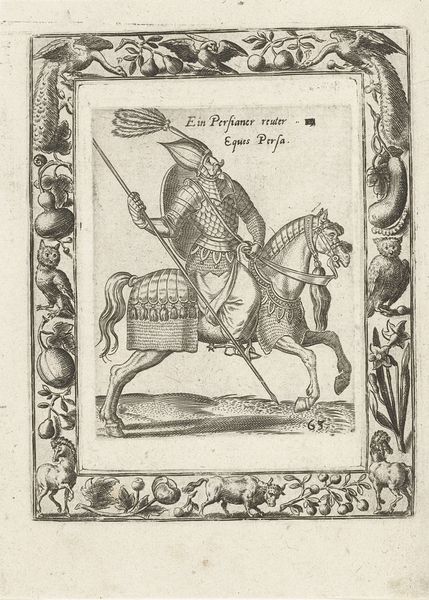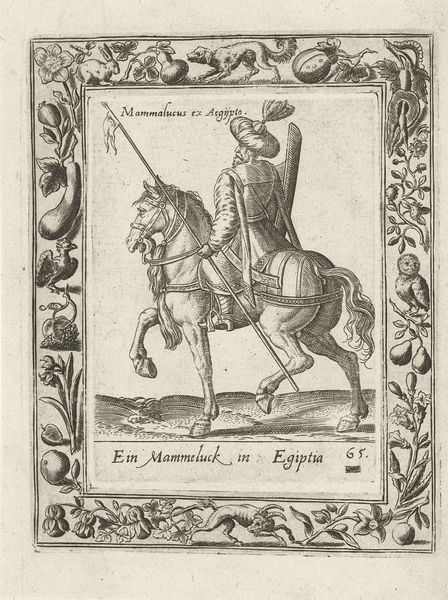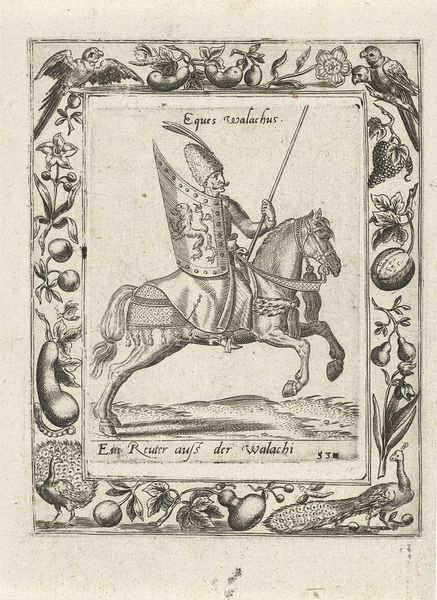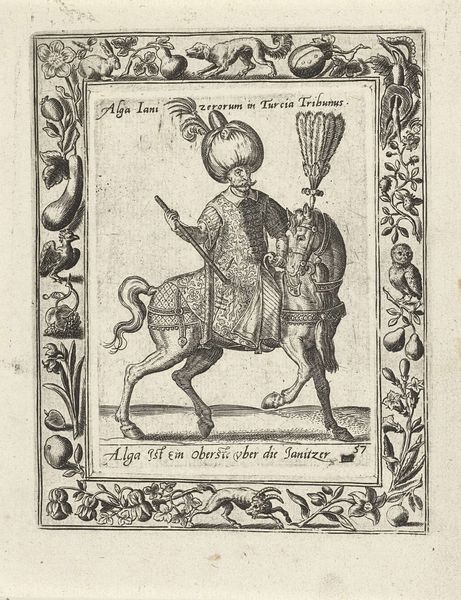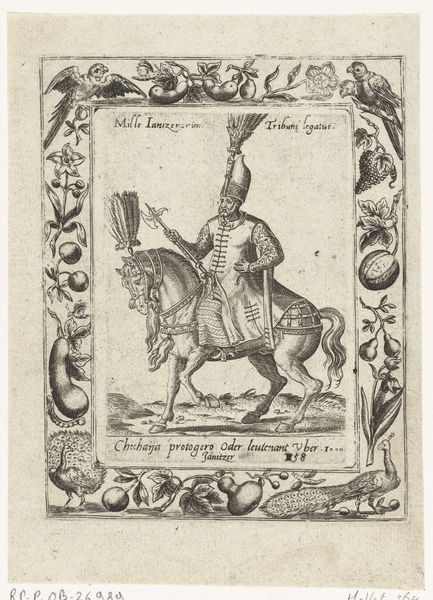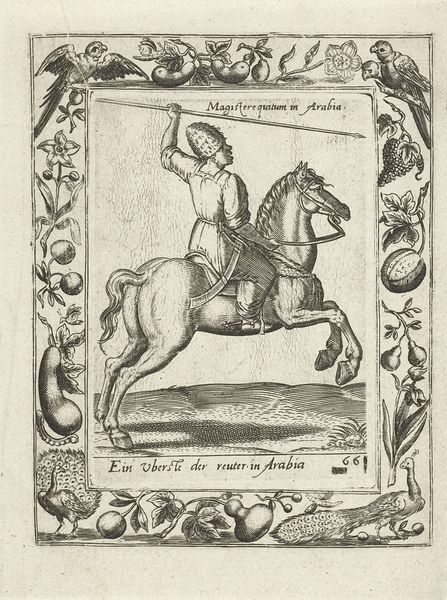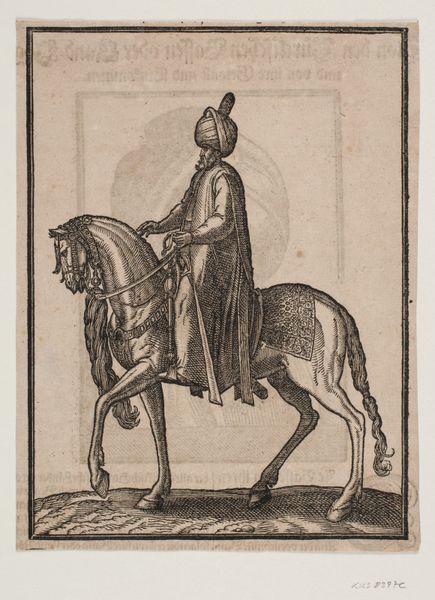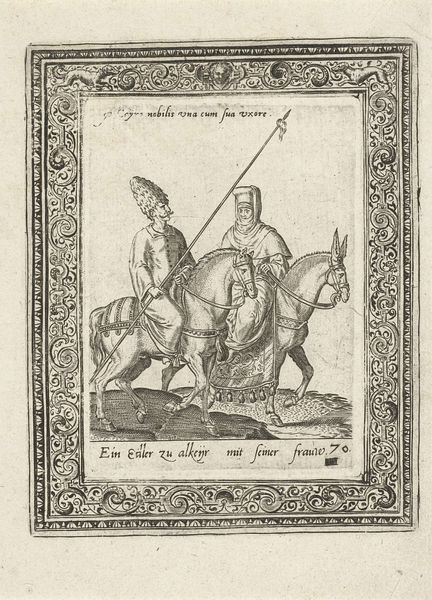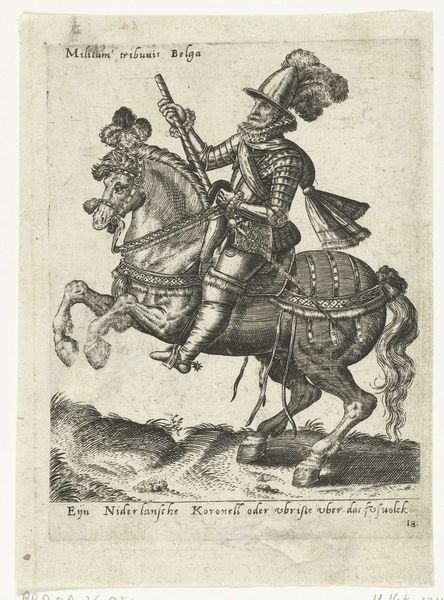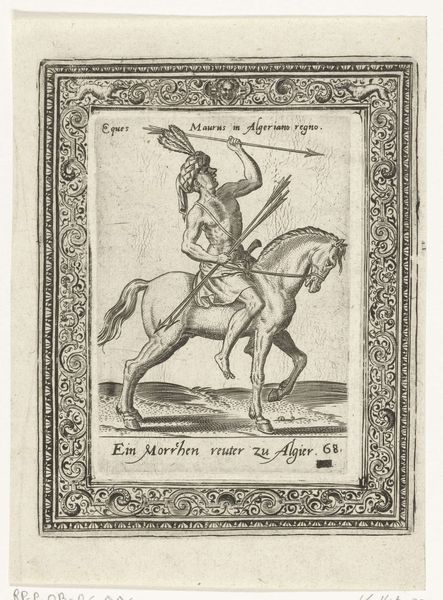
print, engraving
#
portrait
#
dutch-golden-age
# print
#
figuration
#
13_16th-century
#
orientalism
#
line
#
genre-painting
#
history-painting
#
academic-art
#
engraving
Dimensions: height 100 mm, width 76 mm, height 137 mm, width 110 mm
Copyright: Rijks Museum: Open Domain
This engraving of the Supreme Judge of the Ottoman Empire on horseback was made by Abraham de Bruyn in the late 16th century. The image creates meaning through visual codes: the judge’s large turban and long beard signify wisdom and authority. The horse is a symbol of power, but its small size here might suggest that the judge is not as powerful as he seems, and is perhaps even a figure of fun. The decorative border featuring animals and plants seems to reference both Western and Ottoman culture. This print was made at a time when Europeans were fascinated and fearful of the Ottoman Empire. Images like this one served to inform and shape public opinion about this powerful, yet mysterious culture. The artist seems to be commenting on the social structures of the Ottoman Empire, perhaps even critiquing them. To understand this artwork better, it is important to research the history of European-Ottoman relations, the role of judges in Ottoman society, and the visual codes used to represent power and authority in the 16th century.
Comments
No comments
Be the first to comment and join the conversation on the ultimate creative platform.
